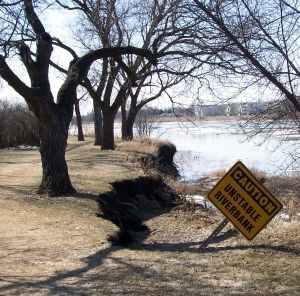| Home | About | Archives | RSS Feed |

The Independent Investor: Ole Man River Bolsters Agriculture Investment Case
 The flooding of the Mississippi River will be the worst disaster in the Delta farming region's history since1927. Millions of fertile acres in Missouri, Tennessee, Louisiana, Mississippi and Arkansas are under water. Farms along that riverbank could take a $2 billion hit, but to us it simply underscores our argument that agriculture is a long term growth area.
The flooding of the Mississippi River will be the worst disaster in the Delta farming region's history since1927. Millions of fertile acres in Missouri, Tennessee, Louisiana, Mississippi and Arkansas are under water. Farms along that riverbank could take a $2 billion hit, but to us it simply underscores our argument that agriculture is a long term growth area.
Understand that my heart goes out to those who are suffering from this misfortune. Cotton, wheat, corn, soybeans, rice and even catfish won't be raised or planted this season, forcing many Americans out of work. It also will add even more pressure to sky high agricultural prices. Readers may recall my January column "Stock up now or pay later," where I warned that higher prices for a wide range of soft commodities would be showing up in retail stores and supermarkets just about now. But the flip side of these disasters is they offer a fertile field of investment for those who pay attention.
Horrific weather conditions throughout the world are largely responsible for the present crop shortages. So far this year weather appears once again to have turned a cold shoulder to farmers whether in the Mississippi or the Yangtze River deltas. Even before the flood, the World Agricultural Supply and Demand estimates from the U.S. Department of Agriculture was forecasting large price increases for a variety of grains for the 2011-2012 periods.
The flooding just happened to occur as a free-fall in commodity prices began. Energy, base metals, precious metals and agricultural foodstuffs have all been sold simultaneously. Yet, in the case of agriculture, I believe shortages will continue to persist supporting higher food prices for the foreseeable future. Therein lies our opportunity.
The astute investor understands that these natural disasters offer windfalls for companies that produce much needed tools, equipment and other products that can aid farmers in reviving this devastated acreage. Flooding will normally wash away nutrients and deposit silt or sand as it recedes. Farmers will need equipment to turn that soil, new seed to plant and the fertilizer to make it grow. Although attention is now focused on the Mississippi, don’t forget that other areas of the country are suffering from an abnormally wet spring as well.
In the corn market, for example, U.S. plantings for the first week in May came in at 13 percent, the third lowest pace since 1986 and well below the 10-year average of 43 percent. Ohio, Indiana and Iowa reported plantings of just 1, 2 and 8 percent. The odds that farmers will close the planting gap look slimmer and slimmer since either flooding or severe drought are hitting large areas of the farm belt.
Over in Texas, Oklahoma and the New Mexico range, cattle herds are being pulled off once lush pasture land as either drought or fire has reduced the range to desert. Instead, cattle are dining on feed, already in scarce supply, which will both increase costs and ultimately prices for consumers.
But those are just the short-term considerations. As we look at the long-term supply and demand imbalance, the investment case for food commodities is even stronger. The United Nations Food and Agricultural Organization (FAO) is projecting an increase of 2.3 billion in the world population by 2050 to 9 billion. Developing countries will account for the lion's share of that growth. It will take a 70 percent increase in food production (yearly investment of $209 billion) just to keep pace with that growth rate.
If, at the same time, we want to reduce the future percentage of the world's population that goes hungry, then we need to invest $359 billion a year. Since a growing population that is also hungry is a recipe for violent regime change, politicians worldwide are paying attention.
Unfortunately, there is not enough arable land around the world to expand food production. So, in order to meet future demand, new farming, crop seed and fertilizer technologies will be required. It just so happens that U.S. chemical, fertilizer, equipment and food companies are leaders in forging a path to this brave new world.
Bottom line: for investors, the recent pull back in the commodity space was healthy and long overdue but, in my opinion, does not negate the investment case for agriculture over the long term.
Bill Schmick is an independent investor with Berkshire Money Management. (See "About" for more information.) None of the information presented in any of these articles is intended to be and should not be construed as an endorsement of BMM or a solicitation to become a client of BMM. The reader should not assume that any strategies, or specific investments discussed are employed, bought, sold or held by BMM. Direct your inquiries to Bill at (toll free) or e-mail him at wschmick@fairpoint.net. Visit www.afewdollarsmore.com for more of Bill's insights.
| Tags: weather, commodities |

